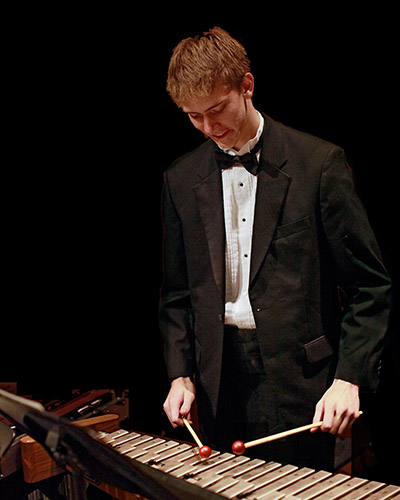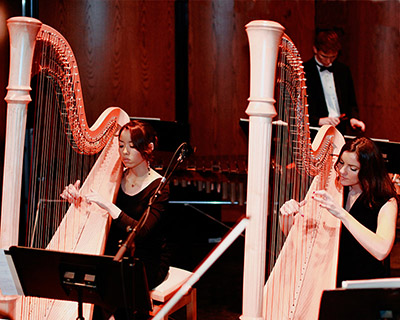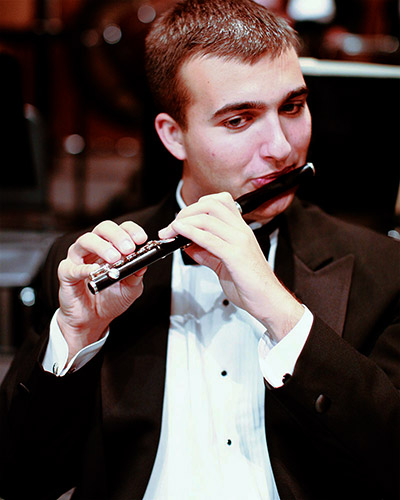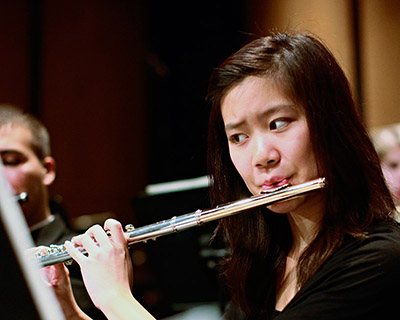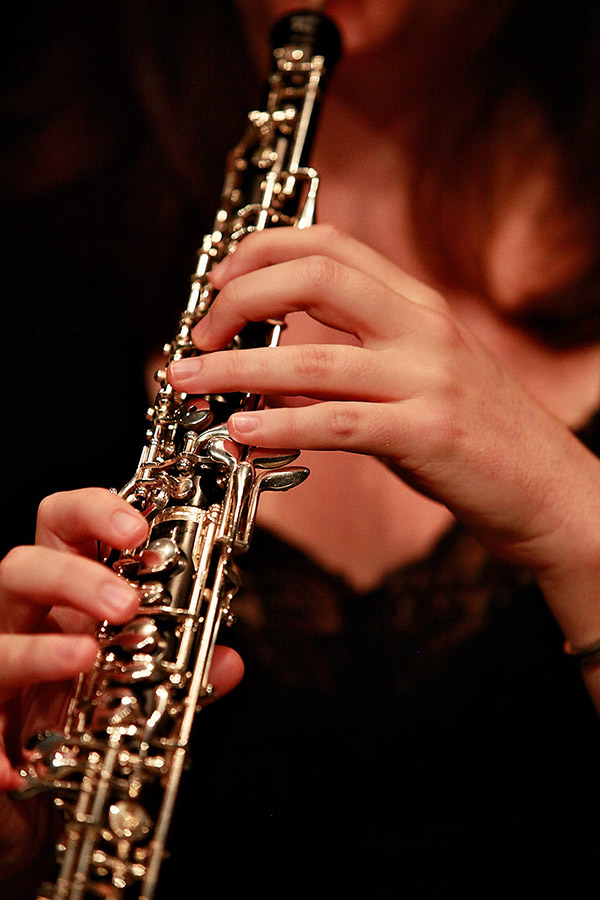Asher Kelman
OPF Owner/Editor-in-Chief
Saturday, September 26th, after dark, over 900 music lovers gathered at Barnhum Hall in Santa Monica, California to hear The Colburn Orchestra, conducted by Yehuda Gilad with Ronald Leonard, Cello as an extra draw. Colburn Conservatory is newest division of The Colburn School and in only 7 years, it has established a reputation for the finest performance in music. So the expectations were high.
The insiders know some of the conservatory students as they won competitions in their home countries and some internationally too and made their way to the street of Grand Culture, Grand Avenue in downtown Los Angeles. This street is the setting for 3 Architectural wonders facing in the distance the Grand Los Angeles city Hall and the Old LA times buildings. Everyone knows the iconic Frank Gehry architecture of the Walt Disney Concert Hall adjacent to the Music Center. Well kitty-corner to the WDCH, is the campus of The Colburn School. The next door Neighbor is the Museum of Contemporary Art! I have photographed the area extensively in this area as have others. The Walt Disney Concert Hall, here and the Colburn School hereThe Original Colburn School building on Grand Avenue is rather conservative representing Richard Colburn, (the benefactor and founder's) wish for it to be quiet and unassuming. Inside, however, is nothing short of spectacular. It houses an accoustical masterpiece, The Zipper Hall, and many other performance spaces, classrooms and all the amenities of a school that serves 115 college level conservatory students, the orchestra, the Trudl Zipper School of Dance and the School of Performing Arts, accounting for another 1600 students from toddler to adult!
My job is to photograph all this artistry and how it's nurtured, protected and polished. It's a challenge that pays off with thrilling music, dance, drama, ballet, jazz and other performance. It's a privilege to be able to contribute towards this amazing teaching program by creating photographs.
Orchestras each have their characteristic leading first positions in each section and then the other members. The musicians often have other outlets for playing and teaching but at Colburn the make up is unique. Each student has competed against the best of the best of their peers from all over the world. The fees are very high as the ratio of faculty and staff to students is 2:1 or more! However, all students are guaranteed entry and full support irrespective of economic standing. There are only 2 barriers to entry: that position in the orchestra is already filled or else other musicians show much more skill and potential. There's not a lot of publicity around the conservatory orchestra performances. The seats are free! The Orchestra performs on the West Side of LA, in Santa Monica as part of an outreach to the wider community. This allows students and folk who don't get ot go to WDCH to hear the LA Philharmonic, to get at least the same standard of performance, but right near their homes.
I can tell you that photographing classical music is a huge challenge. Ideally one would have a silent, supersensitive stealthy, high resolution black ninja camera. It doesn't exist!
Ideally, my imaginary "Canon G13s" would sport a the Canon 5DII sensor at 21MP, work at 4000-6400 ISO even lights just from above and be absolutely silent. Luckily I have the 5DII and my two favorite lenses, the 50 1.2L and the 70-200 2.8 L IS. A wonderful combo but not a silent ninja warrior! Forget flash! It's disturbing and anyway, the time taken for the 580 EX camera flash to warm up to red is too long.
Before the leader of the orchestra comes on stage to get the note from the oboist for tuning the orchestra, the musicians are doing last minute practicing, putting alternate instruments in place, the percussionists have a lot to set up. Some are doing last second practice of parts they know so well, but want to assure their hands are ready for this major event of their young lives. So, here I come, vaulting surreptitiously on the stage, hunting for pictures. To do this, without precipitating impatience, nervousness and anguish requires moving like a silent shadow. So I try my best,, occasionally catching a musicians eye, but knowing I must move between the closely packed chairs and music stands without interfering or knocking anyone over. There's no time for anything but a fast, compose, snap and hardly stop anywhere and then after maybe 60 seconds get back off the stage and silently find my seat, which someone has grabbed!
I'll come back here shortly to add pics of the musicians getting ready! Meanwhile, Ill post the one's I have at hand. You are welcome to comment!
The insiders know some of the conservatory students as they won competitions in their home countries and some internationally too and made their way to the street of Grand Culture, Grand Avenue in downtown Los Angeles. This street is the setting for 3 Architectural wonders facing in the distance the Grand Los Angeles city Hall and the Old LA times buildings. Everyone knows the iconic Frank Gehry architecture of the Walt Disney Concert Hall adjacent to the Music Center. Well kitty-corner to the WDCH, is the campus of The Colburn School. The next door Neighbor is the Museum of Contemporary Art! I have photographed the area extensively in this area as have others. The Walt Disney Concert Hall, here and the Colburn School hereThe Original Colburn School building on Grand Avenue is rather conservative representing Richard Colburn, (the benefactor and founder's) wish for it to be quiet and unassuming. Inside, however, is nothing short of spectacular. It houses an accoustical masterpiece, The Zipper Hall, and many other performance spaces, classrooms and all the amenities of a school that serves 115 college level conservatory students, the orchestra, the Trudl Zipper School of Dance and the School of Performing Arts, accounting for another 1600 students from toddler to adult!
My job is to photograph all this artistry and how it's nurtured, protected and polished. It's a challenge that pays off with thrilling music, dance, drama, ballet, jazz and other performance. It's a privilege to be able to contribute towards this amazing teaching program by creating photographs.
Orchestras each have their characteristic leading first positions in each section and then the other members. The musicians often have other outlets for playing and teaching but at Colburn the make up is unique. Each student has competed against the best of the best of their peers from all over the world. The fees are very high as the ratio of faculty and staff to students is 2:1 or more! However, all students are guaranteed entry and full support irrespective of economic standing. There are only 2 barriers to entry: that position in the orchestra is already filled or else other musicians show much more skill and potential. There's not a lot of publicity around the conservatory orchestra performances. The seats are free! The Orchestra performs on the West Side of LA, in Santa Monica as part of an outreach to the wider community. This allows students and folk who don't get ot go to WDCH to hear the LA Philharmonic, to get at least the same standard of performance, but right near their homes.
I can tell you that photographing classical music is a huge challenge. Ideally one would have a silent, supersensitive stealthy, high resolution black ninja camera. It doesn't exist!
Ideally, my imaginary "Canon G13s" would sport a the Canon 5DII sensor at 21MP, work at 4000-6400 ISO even lights just from above and be absolutely silent. Luckily I have the 5DII and my two favorite lenses, the 50 1.2L and the 70-200 2.8 L IS. A wonderful combo but not a silent ninja warrior! Forget flash! It's disturbing and anyway, the time taken for the 580 EX camera flash to warm up to red is too long.
Before the leader of the orchestra comes on stage to get the note from the oboist for tuning the orchestra, the musicians are doing last minute practicing, putting alternate instruments in place, the percussionists have a lot to set up. Some are doing last second practice of parts they know so well, but want to assure their hands are ready for this major event of their young lives. So, here I come, vaulting surreptitiously on the stage, hunting for pictures. To do this, without precipitating impatience, nervousness and anguish requires moving like a silent shadow. So I try my best,, occasionally catching a musicians eye, but knowing I must move between the closely packed chairs and music stands without interfering or knocking anyone over. There's no time for anything but a fast, compose, snap and hardly stop anywhere and then after maybe 60 seconds get back off the stage and silently find my seat, which someone has grabbed!
I'll come back here shortly to add pics of the musicians getting ready! Meanwhile, Ill post the one's I have at hand. You are welcome to comment!
Last edited:

